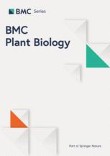Report on Sustainable Phosphorus Management in Agriculture Through Microbial Solutions
Introduction: The Challenge of Phosphorus Use and its Alignment with Sustainable Development Goals (SDGs)
Phosphorus (P) is an essential, non-renewable macronutrient critical for global crop production. However, conventional agricultural practices rely heavily on synthetic phosphorus fertilizers, which are often used inefficiently. This inefficiency leads to significant environmental and economic challenges that directly conflict with several United Nations Sustainable Development Goals (SDGs).
- SDG 2 (Zero Hunger): While phosphorus is vital for food security, its finite nature and inefficient use threaten long-term agricultural productivity.
- SDG 6 (Clean Water and Sanitation) & SDG 14 (Life Below Water): Excess phosphorus from fertilizer runoff is a primary driver of eutrophication, leading to harmful algal blooms, oxygen depletion, and degradation of aquatic ecosystems.
- SDG 12 (Responsible Consumption and Production): The current model of mining, processing, and applying phosphate rock is resource-intensive and contributes to environmental pollution, necessitating a shift towards more sustainable production patterns.
- SDG 15 (Life on Land): Inefficient phosphorus application can alter soil chemistry and negatively impact terrestrial ecosystems and soil biodiversity.
Research into phosphorus nutrition, deficiency symptomology, and leaching in both traditional and soilless substrates underscores the urgent need for innovative solutions that enhance phosphorus use efficiency and minimize environmental impact.
The Rhizosphere Microbiome: A Key to Sustainable Nutrient Cycling
Harnessing Soil Biodiversity for SDG 15 (Life on Land)
The rhizosphere—the area of soil directly surrounding plant roots—hosts a complex community of microorganisms that play a fundamental role in plant health and nutrient acquisition. This plant-microbiome interaction is a cornerstone of ecosystem function and represents a significant opportunity to advance sustainable agriculture.
- The composition of microbial communities in soil and soilless substrates is influenced by factors such as organic matter, nutrient availability, and plant phenological stage.
- Understanding these microbial dynamics is crucial for developing strategies that support **SDG 15 (Life on Land)** by preserving and enhancing soil biodiversity.
- Beneficial microbes, often termed Plant Growth-Promoting Rhizobacteria (PGPR), can improve plant tolerance to abiotic stresses like drought and low fertility, contributing to resilient agricultural systems under **SDG 13 (Climate Action)**.
Phosphate Solubilizing Microorganisms (PSMs) as a Sustainable Alternative
Mechanisms and Applications for Responsible Production (SDG 12)
A specific group of beneficial microbes, known as Phosphate Solubilizing Microorganisms (PSMs), offers a direct solution to the phosphorus dilemma. These microorganisms can convert insoluble forms of phosphorus in the soil, including rock phosphate, into forms that are available for plant uptake.
- Mechanism of Action: PSMs employ several strategies to solubilize phosphorus, including:
- Production of organic acids (e.g., gluconic acid), which lower soil pH and chelate mineral cations.
- Secretion of enzymes like phosphatases that mineralize organic phosphorus.
- Release of exopolysaccharides and siderophores that contribute to mineral weathering.
- Contribution to SDGs: The application of PSMs as bio-inoculants or biostimulants directly supports key sustainability targets:
- By increasing the bioavailability of soil phosphorus, PSMs enhance nutrient use efficiency, reducing the need for synthetic fertilizers and promoting the goals of SDG 12 (Responsible Consumption and Production).
- Improved phosphorus uptake leads to enhanced plant growth, vigor, and yield, directly contributing to SDG 2 (Zero Hunger).
- The use of PSMs allows for the effective utilization of natural, low-grade rock phosphate, creating a more circular and sustainable phosphorus economy.
Characterization and Evaluation of Microbial Inoculants
Advancing Innovation for Sustainable Agriculture (SDG 9)
The successful deployment of microbial solutions requires rigorous scientific evaluation to identify and characterize the most effective strains. This process aligns with SDG 9 (Industry, Innovation, and Infrastructure) by fostering biotechnological advancements for sustainable development.
Key Research and Development Areas:
- Isolation and Screening: Efficient methods are used to isolate and screen bacteria from various environments for their ability to solubilize phosphate, potassium, and zinc.
- Genomic Analysis: Modern bioinformatics tools, including whole-genome sequencing and Average Nucleotide Identity (ANI) analysis, are employed to identify bacterial species (e.g., Pseudomonas, Serratia, Pantoea) and uncover the genetic basis for their phosphate-solubilizing capabilities.
- Phenotypic Evaluation: Digital phenotyping systems and spectral vegetation indices are utilized for non-destructive, high-throughput evaluation of a microbe’s ability to promote plant growth, improve nutrient status, and enhance stress tolerance under controlled conditions.
This comprehensive approach ensures that only well-characterized and effective microbial strains are developed into commercial products, maximizing their positive impact on achieving global sustainability goals.
Analysis of Sustainable Development Goals in the Article
1. Which SDGs are addressed or connected to the issues highlighted in the article?
The provided list of references discusses topics primarily related to plant nutrition, soil microbiology, and agricultural practices. Based on the titles of these references, the following Sustainable Development Goals (SDGs) are addressed:
- SDG 2: Zero Hunger: The articles focus on enhancing plant growth, crop production, and nutrient uptake (e.g., Ref 2, 5, 20, 31). This directly relates to improving agricultural productivity and ensuring sustainable food production systems.
- SDG 6: Clean Water and Sanitation: Several references discuss the leaching of phosphorus from fertilizers (Ref 6, 7). This issue is a major contributor to water pollution (eutrophication). By exploring methods to improve phosphorus uptake efficiency, this research contributes to protecting water resources.
- SDG 12: Responsible Consumption and Production: The research on phosphate-solubilizing microorganisms (Ref 22, 23, 24) and reduced fertilization regimes (Ref 21) promotes the efficient use of natural resources (phosphate rock is finite) and the reduction of chemical fertilizer use, aligning with sustainable production patterns.
- SDG 15: Life on Land: The extensive focus on soil microbiomes, rhizosphere ecology, and microbial communities (Ref 8, 9, 11, 12, 36) is central to protecting and restoring terrestrial ecosystems. Healthy soil is fundamental to land health, and this research explores how to maintain and leverage soil biodiversity for sustainable agriculture.
2. What specific targets under those SDGs can be identified based on the article’s content?
The content of the reference list points to several specific SDG targets:
- Target 2.4: By 2030, ensure sustainable food production systems and implement resilient agricultural practices that increase productivity and production, that help maintain ecosystems… and that progressively improve land and soil quality.
- Explanation: The research on using plant growth-promoting rhizobacteria (PGPR) and phosphate-solubilizing microorganisms (PSMs) (Ref 18, 20, 27, 32) aims to create more sustainable and resilient agricultural systems. These practices enhance nutrient availability naturally, improving soil quality and increasing crop productivity without relying solely on chemical inputs.
- Target 6.3: By 2030, improve water quality by reducing pollution, eliminating dumping and minimizing release of hazardous chemicals and materials…
- Explanation: References like “Leaching of applied phosphorus in container media” (Ref 6) and “Phosphorus and sulfur leaching…” (Ref 7) highlight the problem of nutrient runoff. The development of microbial solutions that increase phosphorus uptake efficiency (Ref 20, 69) directly addresses this target by reducing the amount of excess fertilizer that can leach into water bodies.
- Target 12.4: By 2020, achieve the environmentally sound management of chemicals and all wastes throughout their life cycle… and significantly reduce their release to air, water and soil in order to minimize their adverse impacts on human health and the environment.
- Explanation: The exploration of biofertilizers and microbial biostimulants (Ref 34, 39) as alternatives to chemical fertilizers supports the environmentally sound management of agricultural chemicals. Studies on “a reduced fertilization regime” (Ref 21) demonstrate a direct effort to reduce the release of these chemicals into the soil and water.
- Target 15.3: By 2030, combat desertification, restore degraded land and soil, including land affected by desertification, drought and floods, and strive to achieve a land degradation-neutral world.
- Explanation: The focus on “Soil microbiomes and one health” (Ref 11) and understanding the “diversity and biogeography of soil bacterial communities” (Ref 36) contributes to strategies for improving soil health. By enhancing the natural microbial processes that make nutrients available to plants, this research provides tools to restore the fertility and biological activity of degraded soils.
3. Are there any indicators mentioned or implied in the article that can be used to measure progress towards the identified targets?
Yes, the reference titles imply several quantitative and qualitative indicators that can be used to measure progress:
- Indicators for Target 2.4 (Sustainable Agriculture):
- Crop Yield and Growth: Many titles explicitly mention measuring plant growth, yield, and quality. For example, “increase yield, growth and nutrition of strawberry” (Ref 31), “increases shoot growth and tissue nutrient concentration” (Ref 19), and “enhancing tomato plant growth” (Ref 30). These are direct measures of agricultural productivity.
- Nutrient Uptake Efficiency: The effect of microorganisms on “phosphorus uptake by Vicia Faba L. plants” (Ref 20) is a key indicator of how efficiently plants are using available nutrients, which is a cornerstone of sustainable agriculture.
- Indicators for Target 6.3 & 12.4 (Pollution Reduction):
- Nutrient Leaching Levels: The titles “Leaching of applied phosphorus” (Ref 6) and “Phosphorus and sulfur leaching” (Ref 7) directly name the indicator for water pollution from agricultural sources. Measuring the reduction in leached nutrients would show progress.
- Reduction in Fertilizer Application: The phrase “reduced fertilization regime” (Ref 21) serves as an indicator for the decreased use of chemical inputs, which is a primary goal for reducing agricultural pollution.
- Indicators for Target 15.3 (Soil Health):
- Soil Microbial Diversity and Community Structure: References such as “Microbial community structure in soilless substrates” (Ref 15) and “The diversity and biogeography of soil bacterial communities” (Ref 36) imply that analyzing the composition and health of the soil microbiome is a critical indicator of soil quality and ecosystem restoration.
- Phosphate Solubilization Activity: The measurement of “phosphate-solubilizing activity” (Ref 20, 62) in soil microorganisms is a functional indicator of soil health, showing the soil’s natural capacity to cycle nutrients.
4. Summary Table of SDGs, Targets, and Indicators
| SDGs | Targets | Indicators |
|---|---|---|
| SDG 2: Zero Hunger | 2.4: Ensure sustainable food production systems and implement resilient agricultural practices. |
|
| SDG 6: Clean Water and Sanitation | 6.3: Improve water quality by reducing pollution and minimizing the release of chemicals. |
|
| SDG 12: Responsible Consumption and Production | 12.4: Achieve the environmentally sound management of chemicals and reduce their release to soil and water. |
|
| SDG 15: Life on Land | 15.3: Restore degraded land and soil and achieve a land degradation-neutral world. |
|
Source: bmcplantbiol.biomedcentral.com






